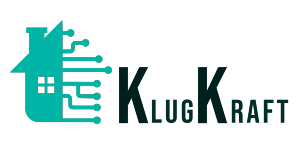Office lounge automation involves the integration of smart technology and automation features to enhance the functionality, comfort, and user experience within office lounge areas. These spaces are designed for relaxation, collaboration, and informal meetings, and automation can help optimize the utilization of lounge areas while providing convenience and comfort to users. Here’s an overview of office lounge automation:
- Smart Furniture and Seating: Office lounge areas can be equipped with smart furniture and seating solutions that offer comfort and flexibility. This may include adjustable seating with built-in charging ports, ergonomic chairs with customizable settings, and modular furniture that can be reconfigured to accommodate different seating arrangements and group sizes.
- Environmental Controls: Office lounge automation systems can control environmental factors such as lighting, temperature, and air quality to create a comfortable and inviting atmosphere. Smart lighting solutions with dimming and color-changing capabilities can be programmed to adjust lighting levels based on occupancy and time of day, while smart thermostats can regulate temperature settings for optimal comfort.
- Entertainment Systems: Lounge automation systems may include entertainment features such as audiovisual equipment, gaming consoles, and streaming devices to provide entertainment options for users. Flat-screen TVs, sound systems, and multimedia players can be integrated with streaming services and content platforms to offer a variety of entertainment choices for lounge users.
- Refreshment Stations: Office lounge areas often include refreshment stations or mini kitchens where employees can access beverages, snacks, and refreshments. Automation systems can manage inventory levels, monitor usage patterns, and reorder supplies automatically when stock is low. Smart vending machines and coffee makers can offer a convenient and self-service experience for users.
- Occupancy Monitoring: Sensors and occupancy tracking systems can be installed in office lounge areas to monitor occupancy levels and usage patterns. This data can be used to optimize space utilization, allocate resources more efficiently, and identify peak usage times for lounge areas. Occupancy monitoring also helps ensure compliance with social distancing guidelines and capacity limits.
- Room Booking and Reservation: For larger lounge areas or private meeting spaces within lounges, room booking and reservation systems can be implemented to manage usage and availability. Users can check room availability, schedule meetings, and reserve lounge spaces in advance using mobile apps or digital signage displays, reducing conflicts and ensuring a smooth booking process.
- Integrated Communication and Collaboration Tools: Lounge automation systems can integrate with communication and collaboration tools such as video conferencing platforms, digital whiteboards, and messaging apps to facilitate informal meetings and collaboration sessions. Users can access these tools directly from lounge areas to brainstorm ideas, share information, and collaborate on projects in a relaxed and comfortable environment.
- Wellness Features: Office lounge automation can incorporate wellness features to promote employee well-being and productivity. This may include relaxation areas with massage chairs or meditation pods, greenery and biophilic design elements to improve indoor air quality and reduce stress, and wellness apps or fitness trackers to encourage physical activity and healthy habits.
- Security and Access Control: Lounge automation systems can enhance security and access control by integrating with access control systems, surveillance cameras, and authentication mechanisms. Smart locks, access card readers, and biometric scanners can restrict access to lounge areas, while surveillance cameras and motion sensors can monitor for unauthorized access and security threats.
Overall, office lounge automation aims to create inviting, comfortable, and functional spaces where employees can relax, collaborate, and recharge. By leveraging smart technology and automation features, organizations can optimize the utilization of lounge areas, enhance user experience, and support employee well-being and productivity in the workplace.

